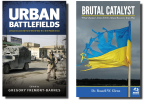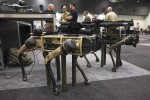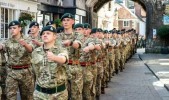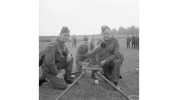Search
Using the filters to the left, click your selection, it will become bold and filter the results, click it again to remove that filter.
The Structure of War and the Rise of the West Yale University Press, 2024, 473 pp, RRP US$40 (hardcover) Hardcover ISBN 9780300279686 Author: Williamson Murray Reviewed by: Matthew Jones Williamson Murray’s The Dark Path: The Structure of War and the Rise of the Weaast offers more than a sweeping survey of Western military history. It presents a profound intellectual excavation of how war has not only followed but often propelled the ascent of Western civilisation. From the rise of bureaucratic states in …

France at War, 1939–1942 Cambridge University Press, 2023, ISBN 9781107047464, 742 pp, RRP AU$53.95 (hardcover) Author: Douglas Porch Reviewed by: John Nash One of the most fascinating aspects of the Second World War is France’s rapid defeat at the hands of Germany in mid-1940. The success of the ‘Blitzkrieg’ was a shock to many and changed the dynamics of the war. It is easy to see the fall of Paris as the end of France’s war, but this is far from the case. In the five years that followed, French …

The Island Campaigns and the Founding of China’s Navy Author: Toshi Yoshihara Georgetown University Press, 2023, 176 pp, RRP USD$34.95 (softback) Paperback ISBN 9781647122829 Reviewed by: Dan Phelan Much of China’s history, from its ambition and grandeur through to its conflict with foreign powers, has come from and been tied to the maritime domain. In its conquest of and victory over the Kuomintang (KMT), the Chinese Communist Party (CCP) faced the arduous task of building a navy from the ground up with …

Daniel Phelan is a Cyber Security Strategy Specialist at the Department of Defence. Previously he was a graduate within the department, undertaking a rotation with the Australian Army Research Centre. He holds a Bachelor of Information Technology and Arts and a Diploma of Languages, with majors in International Relations, Computer Networks and Security, and Mandarin Studies from Monash University. … Daniel …
Urban Battlefields: Lessons Learned from World War II to the Modern Era Naval Institute Press, 2024, 392 pp, RRP USD$44.95 (hardcover) Hardcover ISBN 9781682477243 Editor: Gregory Fremont-Barnes Brutal Catalyst: What Ukraine’s Cities Tell Us About Recovery From War Key Point Press, 2024, 532 pp, RRP AU$45.05 (hardcover) Hardcover ISBN 9798990915879 Author: Dr Russell W Glenn Reviewed by: Albert Palazzo Urban operations are the type of battle that the military like to avoid but inevitably have …

De Gruyter, 2024, 517 pp, RRP EUR €139.95 Hardcover ISBN 9783110741926 Edited by: James P Rogers Reviewed by: Carl Rhodes The use of drones in warfare has expanded significantly over the past two decades and, as with the applications of any new technology, many questions have been raised about their past, present and future role. These enquiries encompass not only the technological capabilities of drones and their effectiveness on the battlefield but also the ethical implications of remote force …

25 Case Studies on the Global State of Defense AI Springer , 2024, 603 pp, RRP EUR €49.99 Hardcover ISBN 9783031586484 Editors: Heiko Borchert, Torben Schütz and Joseph Verbovszky Reviewed by: Callum Hamilton and Adam J Hepworth Around the world, states and defence organisations are rapidly developing their capacities to seize emergent opportunities in the military use of artificial intelligence (AI). Recent technological advances have enhanced the integration of cloud computing, data infrastructure …

Lessons from the Military Innovation Literature There exists a consensus in modern military circles about the importance of innovation and adaptation. As the Chief of Army states, ‘The side that adapts fastest gains the edge.’ [1] Retired Major General Mick Ryan likewise argues that ‘an important virtue for military organizations to develop in peacetime, and nurture constantly in war, must be adaptability to unexpected events’. [2] Based on his experience as chief of staff of the Ukrainian army, Valery …

This is not an article about what the British Army consider the concept of ‘mission command’ to be; nor is it about how they approach its practice. Those who wish to explore that can simply read their doctrine. It is well written, well thought through, very readable and readily available. [1] I am, however, a great believer in the maxim that if you want to know where you are it’s a very good idea to understand how you got there and where you came from. In that respect, this article will make the (perhaps …

Theorising from the Past to Prepare for Future Wars Now, men, you answered your country’s call today. We’re all here to defend our homes and loved ones. I know you will not shirk that duty. With no guns, we are naked, but we have one invaluable weapon – ingenuity and improvisation. (‘That’s two’) I want you all to go to your homes. Gather what weapons you can and come back here in an hour’s time. From tonight, whatever the odds, we Englishmen … We British … We here are going to be able to say, ‘Come on, …

